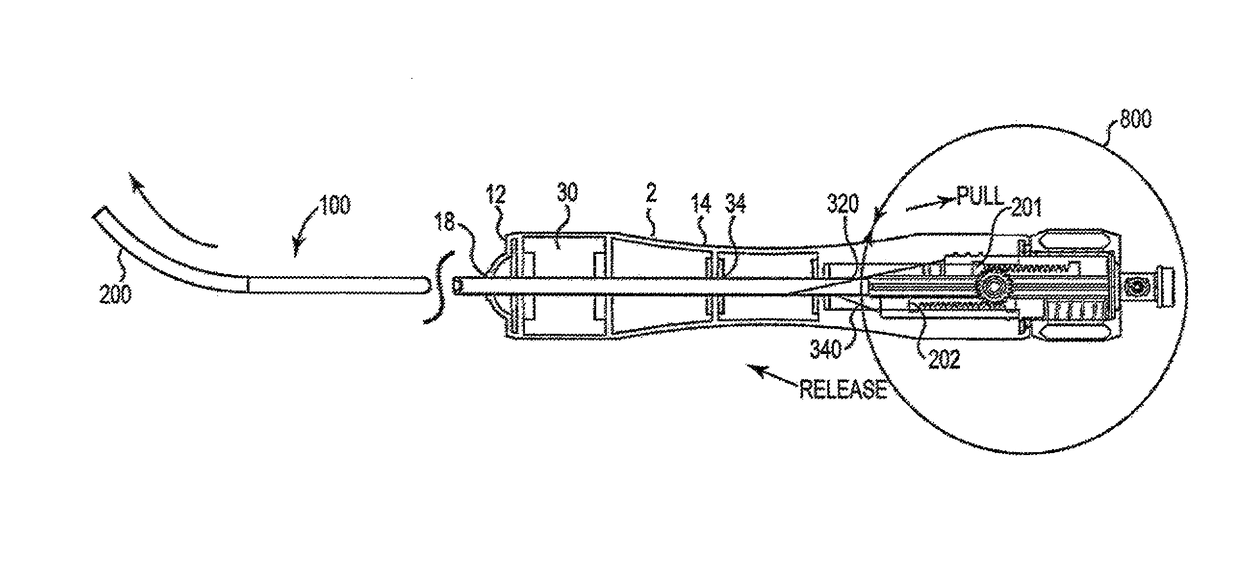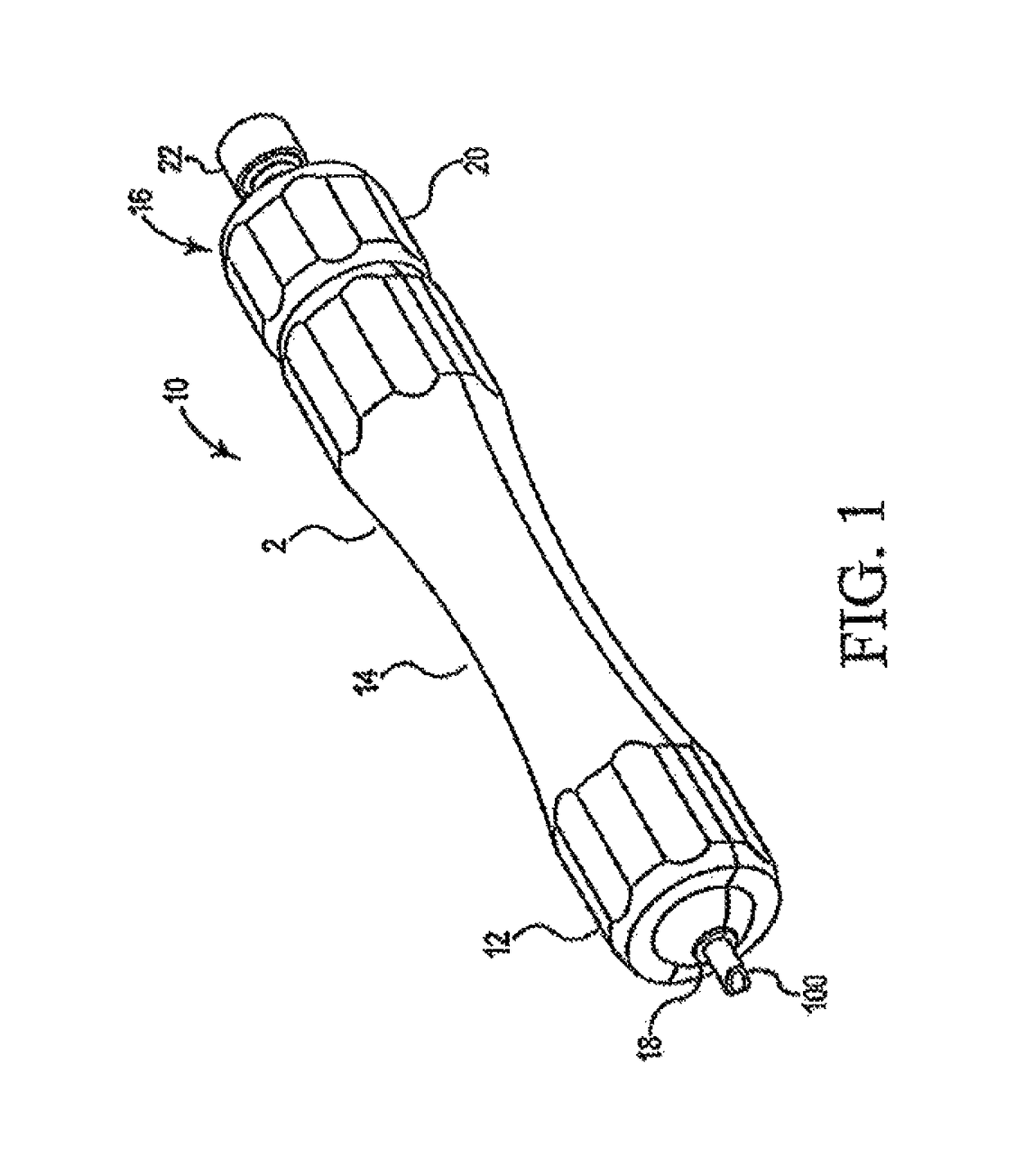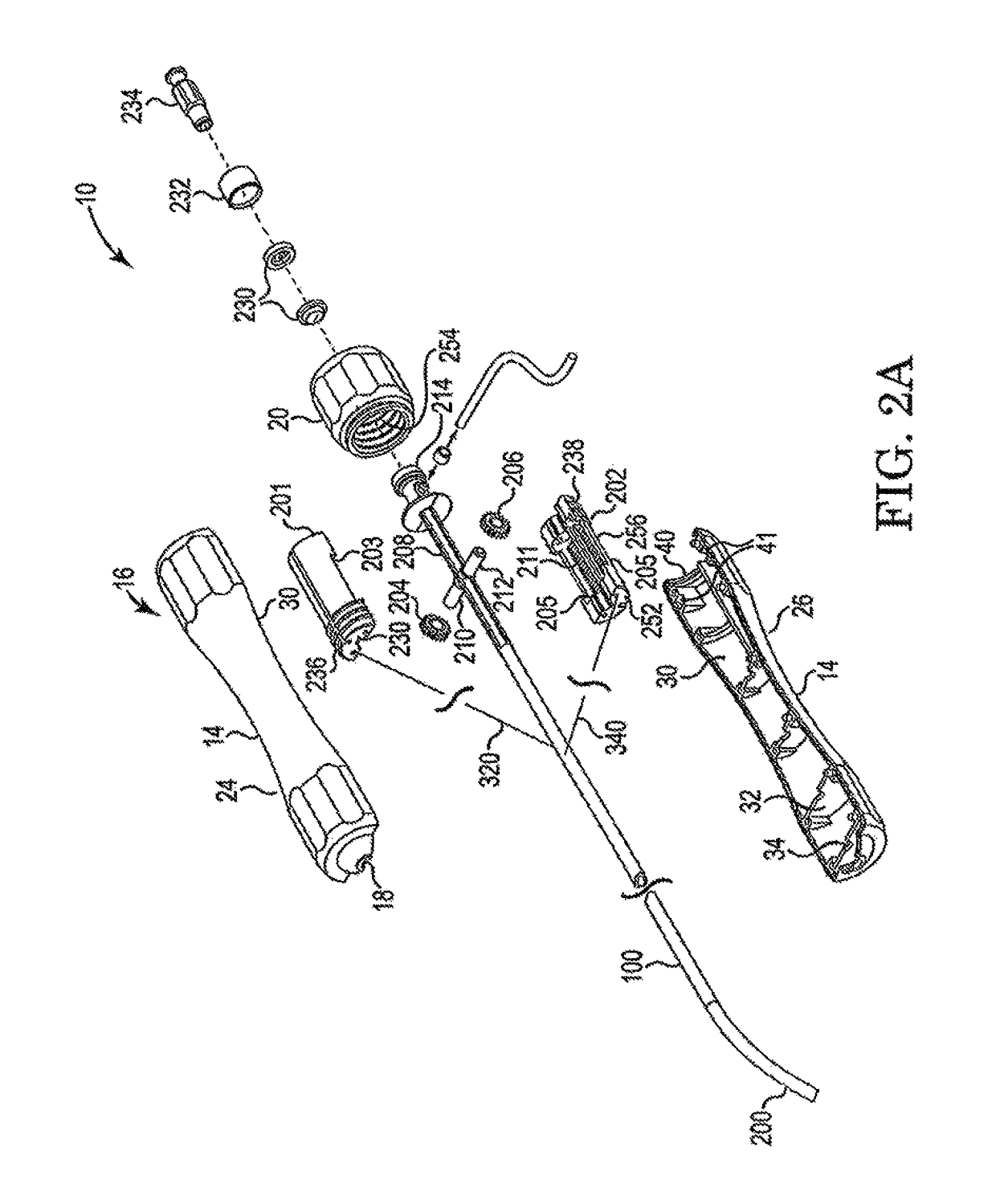Steerable sheath including elastomeric member
a technology of elastomeric member and sheath, which is applied in the direction of magnetic variable regulation, instruments, catheters, etc., can solve the problems of high current density in the tissue, and patient safety risks, etc., to achieve minimize resistance, and quick inflation and deflation
- Summary
- Abstract
- Description
- Claims
- Application Information
AI Technical Summary
Benefits of technology
Problems solved by technology
Method used
Image
Examples
Embodiment Construction
[0059]Numerous structural variations of an MR compatible steerable elastomeric member sheath in accordance with the invention are contemplated and within the intended scope of the invention. Those of skill in the art will appreciate that the exemplary steerable elastomeric member sheath may be coupled to other types of steerable sheath shafts having control handles. Therefore, for purposes of discussion and not limitation, an exemplary embodiment of the MR compatible steerable elastomeric member sheath will be described in detail below.
[0060]Referring to the FIGS. like elements have been numbered with like reference numerals.
[0061]Referring now to FIG. 1, the control handle 10 in accordance with the invention includes a cover 2 as illustrated in FIG. 1. Cover 2 includes distal portion 12, hand-graspable middle region 14, and proximal end 16. Distal portion 12 includes aperture 18 through which steerable sheath shaft 100 exits. Proximal end 16 includes rotatable adjustment knob 20 an...
PUM
 Login to View More
Login to View More Abstract
Description
Claims
Application Information
 Login to View More
Login to View More - R&D
- Intellectual Property
- Life Sciences
- Materials
- Tech Scout
- Unparalleled Data Quality
- Higher Quality Content
- 60% Fewer Hallucinations
Browse by: Latest US Patents, China's latest patents, Technical Efficacy Thesaurus, Application Domain, Technology Topic, Popular Technical Reports.
© 2025 PatSnap. All rights reserved.Legal|Privacy policy|Modern Slavery Act Transparency Statement|Sitemap|About US| Contact US: help@patsnap.com



